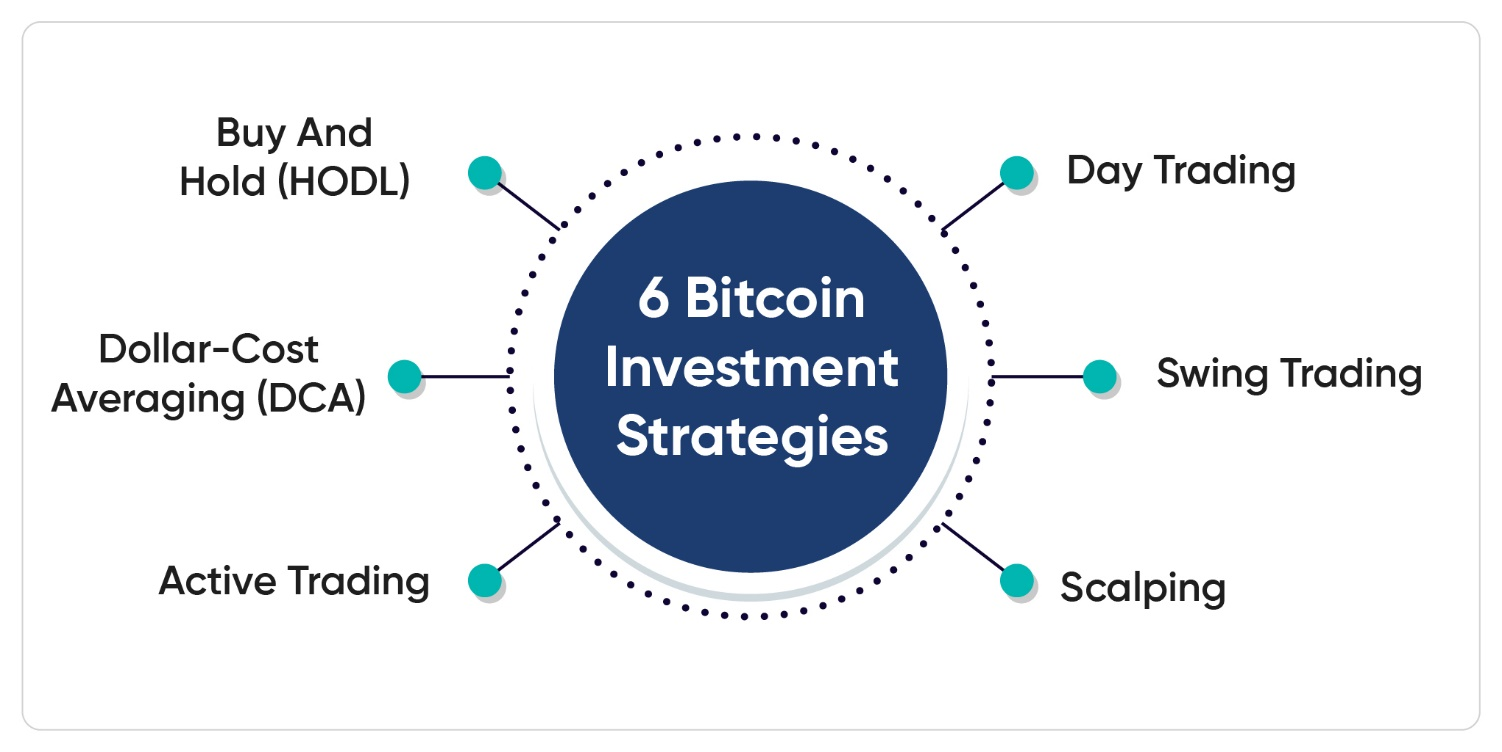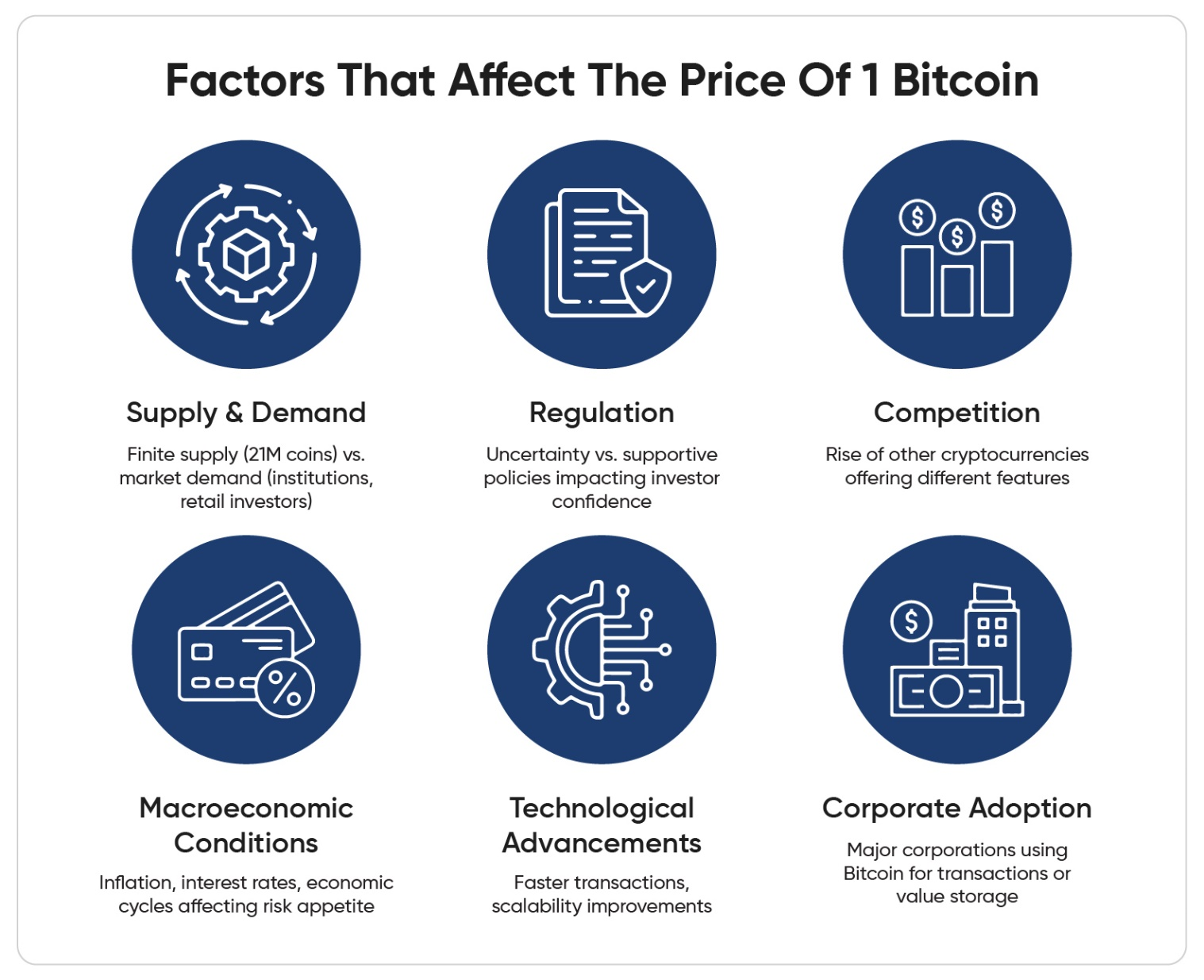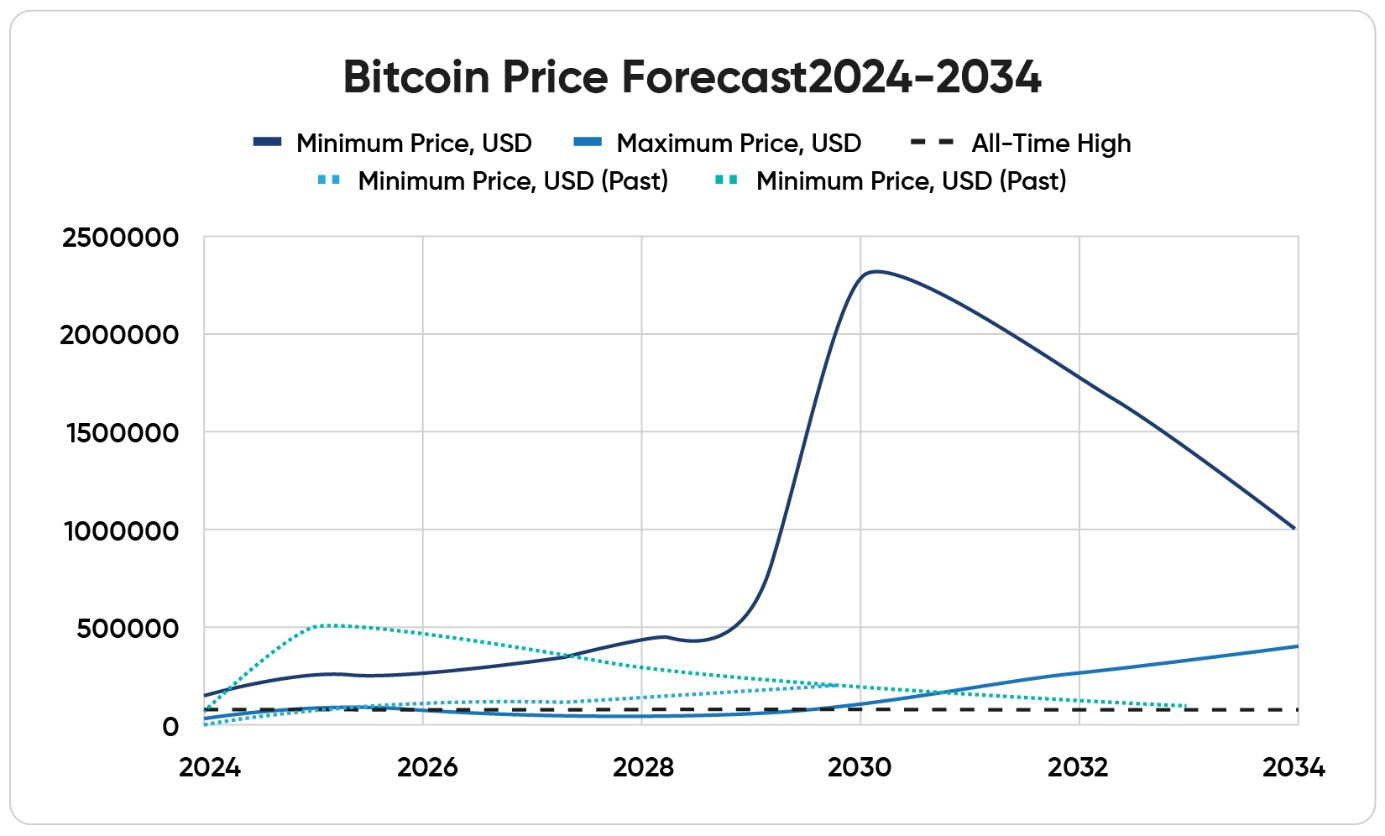
Bitcoin, the first decentralized cryptocurrency, has revolutionized the financial world since its inception in 2009. Created by the pseudonymous developer Satoshi Nakamoto, Bitcoin introduced the concept of a peer-to-peer digital currency that operates without a central authority. Over the years, Bitcoin has evolved from a niche technological experiment to a widely recognized financial asset.
A Technological Revolution (1998-2009)
The seeds of Bitcoin were sown in the late 1990s with the rise of cryptography and the concept of digital cash. Several proposals like B-money by Wei Dai envisioned a decentralized, peer-to-peer electronic currency system. However, these lacked a crucial element – a solution to the “double-spending” problem, where digital money could be spent twice.
In 2008, Satoshi Nakamoto addressed this challenge with the revolutionary concept of blockchain technology. This distributed ledger system, maintained by a network of computers, ensures the secure and transparent recording of transactions, eliminating the need for a central authority. The white paper, titled “Bitcoin: A Peer-to-Peer Electronic Cash System,” outlined the core principles of Bitcoin:
Decentralization: No single entity controls Bitcoin. It operates on a peer-to-peer network of computers running specialized software.
Scarcity: There will only ever be 21 million Bitcoins in existence, controlled by a predetermined issuance schedule.
Security: Cryptography secures Bitcoin transactions, making them tamper-proof and verifiable.
On January 3, 2009, Satoshi Nakamoto mined the Genesis Block of Bitcoin, embedding a headline from The Times as a timestamp and a commentary on the existing financial system. This marked the birth of the Bitcoin network and the creation of the first 50 BTC. In the early years, Bitcoin was primarily used by tech enthusiasts and cryptographers who were fascinated by the underlying blockchain technology.
Recommended Read: Bitcoin: The Original Digital Gold—A Guide for Investors
Growing Popularity and Early Use Cases
Bitcoin began to gain traction in 2010 when it was first used in a commercial transaction. The famous “Bitcoin Pizza Day” on 22 May 2010, saw a programmer named Laszlo Hanyecz pay 10,000 BTC for pizzas, marking a ground-breaking moment in Bitcoin’s history. As more people became aware of Bitcoin, its use cases expanded beyond niche transactions to online purchases and remittances.
The Silk Road and Regulatory Challenges
Bitcoin’s association with the Silk Road, an online black market, brought significant attention and scrutiny from regulators. While this association tarnished Bitcoin’s reputation, it also highlighted the need for regulatory frameworks to address the challenges posed by decentralized digital currencies. Despite these challenges, Bitcoin continued to grow, with exchanges facilitating the trading of Bitcoin for fiat currencies.
Institutional Adoption and Mainstream Recognition
The mid-2010s marked a turning point for Bitcoin as institutional investors and major corporations began to recognize its potential. Companies like Overstock and Microsoft started accepting Bitcoin payments, while investment firms launched Bitcoin investment products. The introduction of Bitcoin futures by the Chicago Mercantile Exchange (CME) in 2017 further legitimized Bitcoin as an investment asset.
Explore More: Institutional Adoption of Bitcoin: Trends and Implications
A Maturing Market: The 2020s and Beyond

Institutional Investment
Hedge funds, asset managers, and publicly traded companies have started to allocate significant portions of their portfolios to Bitcoin, recognizing it as a hedge against inflation and a store of value. Notable examples include MicroStrategy, which has invested billions of dollars in Bitcoin, and Tesla, which added Bitcoin to its balance sheet in early 2021.
The introduction of Bitcoin-focused investment products, such as exchange-traded funds (ETFs) and trusts, has also facilitated institutional investment. The approval of Bitcoin ETFs in various jurisdictions has provided investors with more accessible and regulated means to gain exposure to Bitcoin, further legitimizing its role in the financial markets.
Corporate Adoption
Beyond investment, Bitcoin has also gained traction as a means of payment and a strategic asset for corporations. Companies like Square and PayPal have integrated Bitcoin into their payment platforms, enabling millions of users to buy, sell, and use Bitcoin for transactions. These developments have expanded Bitcoin’s utility and acceptance in the mainstream economy while reducing associated risks.
Regulatory Developments and Clarity
The 2020s have seen significant strides in regulatory clarity for Bitcoin. Governments and regulatory bodies worldwide have recognized the need to establish frameworks that balance innovation with investor protection.
In the United States, the Securities and Exchange Commission (SEC) and the Commodity Futures Trading Commission (CFTC) have taken steps to regulate Bitcoin-related financial products, providing greater certainty for market participants.
In Europe, the European Union has proposed the Markets in Crypto-Assets (MiCA) regulation, aiming to create a comprehensive regulatory framework for digital assets. Similarly, countries like Canada and Australia have introduced regulations to govern cryptocurrency exchanges and custodians, enhancing transparency and security.
Scalability Solutions
Bitcoin’s scalability has been a long-standing challenge, but the 2020s have seen significant progress in this area. The Lightning Network, a Layer 2 solution designed to enable faster and cheaper transactions, has gained traction and adoption. By allowing off-chain transactions, the Lightning Network reduces congestion on the Bitcoin blockchain, enhancing its scalability and usability for everyday transactions.
Decentralized Finance (DeFi) Integration
The rise of decentralized finance (DeFi) has also impacted Bitcoin. While Ethereum has been the primary platform for DeFi applications, Bitcoin has started to integrate with DeFi through projects like Wrapped Bitcoin (WBTC) and RSK. These initiatives enable Bitcoin holders to participate in DeFi protocols, such as lending, borrowing, and yield farming, leveraging the security and liquidity of Bitcoin in the DeFi ecosystem.
Increased Security and Institutional-Grade Custody
As Bitcoin has attracted institutional interest, the need for robust security and institutional-grade custody solutions has grown. Companies like Fidelity Digital Assets, Coinbase Custody, and BitGo have developed advanced custody solutions that meet the stringent requirements of institutional investors. These solutions provide secure storage, insurance, and regulatory compliance, addressing key concerns for large-scale investors.
Macroeconomic Trends
The 2020s have been marked by unprecedented macroeconomic trends, including the COVID-19 pandemic, quantitative easing, and rising inflation. These trends have highlighted Bitcoin’s potential as a hedge against economic uncertainty and currency devaluation. As central banks continue to implement expansive monetary policies, Bitcoin’s fixed supply and decentralized nature have made it an attractive alternative to traditional fiat currencies.
Environmental Concerns and Sustainability Initiatives
Bitcoin’s environmental impact has been a topic of debate, particularly regarding the energy consumption of its proof-of-work (PoW) consensus mechanism. In response, the 2020s have seen a growing emphasis on sustainability within the Bitcoin mining industry. Initiatives such as the Bitcoin Mining Council and increased use of renewable energy sources aim to address environmental concerns and promote sustainable mining practices.
Recommended Read: Mastering Bitcoin Investment: Strategies and Tips
Bitcoin Investment Strategies

Buy and Hold (HODL)
The “HODL” strategy, which originated from a misspelled forum post in 2013, stands for “hold on for dear life.” This long-term investment approach involves buying Bitcoin and holding it regardless of market fluctuations, with the belief that Bitcoin’s value will appreciate significantly over time.
Advantages
Simplicity: HODLing requires minimal effort and decision-making. Once Bitcoin is purchased, the investor simply holds onto it, avoiding the complexities of active trading.
Potential for High Returns: Historical data shows that early adopters who held onto their Bitcoin have seen substantial gains. The limited supply and growing adoption of Bitcoin suggest that its value could continue to rise in the long term.
Mitigates Emotional Trading: By committing to a long-term strategy, investors are less likely to make impulsive decisions based on short-term market movements, reducing the risk of selling at a loss during downturns.
Disadvantages
Market Volatility: Bitcoin’s price can experience significant fluctuations, leading to temporary losses. HODLers must be prepared to withstand periods of high volatility.
Opportunity Cost: By holding Bitcoin, investors might miss out on potential gains from other investments or more active trading strategies.
| Bonus Tips Secure Storage: Since HODLing involves holding Bitcoin for an extended period, secure storage is essential. Consider using hardware wallets or cold storage solutions to protect your investment from hacks and theft.
Regular Review: While the HODL strategy minimizes the need for frequent trading, it’s still important to periodically review your investment and the overall market landscape to stay informed about significant developments.
|
Dollar-Cost Averaging (DCA)
Dollar-cost averaging (DCA) involves regularly investing a fixed amount of money in Bitcoin, regardless of its price. This strategy aims to reduce the impact of market volatility by spreading purchases over time, allowing investors to buy more Bitcoin when prices are low and less when prices are high.
Advantages
Reduces Timing Risk: DCA eliminates the need to time the market, which can be particularly challenging given Bitcoin’s volatility. By investing consistently, investors avoid the pitfalls of trying to buy at the lowest price.
Disciplined Approach: This strategy encourages regular and disciplined investment habits, which can be beneficial for long-term wealth accumulation.
Smoothes Out Volatility: By averaging the purchase price over time, DCA helps to mitigate the effects of short-term price fluctuations, potentially leading to a lower average cost per Bitcoin.
Disadvantages
Potential for Lower Returns: During strong bullish market conditions, DCA may result in lower returns compared to lump-sum investments made at the beginning of a rally.
Requires Consistency: Investors need to commit to regular investments over time, which may require a long-term financial commitment.
| Tips To Remember Automated Investments: Many cryptocurrency exchanges offer automated investment plans that facilitate DCA. Setting up automatic purchases can ensure consistency and reduce the temptation to deviate from the strategy.
Long-Term Commitment: To maximize the benefits of DCA, investors should commit to the strategy for an extended period, ideally several years, to ride out market cycles.
|
Active Trading
Active trading involves buying and selling Bitcoin to capitalize on short-term price movements. This strategy requires a deep understanding of market trends, technical analysis, and trading platforms. There are several types of active trading, including day trading, swing trading, and scalping.
Day Trading
Day trading involves buying and selling Bitcoin within a single day to take advantage of intraday price movements. Day traders aim to profit from small price fluctuations and typically close all positions before the market closes.
Swing Trading
Swing trading involves holding positions for several days or weeks to profit from medium-term trends. Swing traders use technical analysis to identify potential entry and exit points based on market patterns.
Scalping
Scalping involves making numerous trades to gain small profits from minor price changes. Scalpers hold positions for very short periods, often just minutes, to capitalize on small price movements.
Advantages
Potential for Quick Profits: Active trading can generate significant returns in a short period, especially in a volatile market like Bitcoin.
Flexibility: Traders can adapt to changing market conditions and take advantage of both upward and downward price movements.
Leveraged Trading: Some platforms offer leverage, allowing traders to amplify their gains (and losses) with borrowed funds.
Disadvantages
High Risk: Active trading carries a greater potential for losses due to market volatility and trading errors. It requires a high tolerance for risk and the ability to manage losses.
Time-Consuming: Successful active trading requires constant monitoring and analysis of the market, which can be time-consuming and demanding.
Complexity: Active trading involves understanding technical indicators, chart patterns, and trading strategies, which can be complex and challenging for beginners.
| Pro Tips
Risk Management: Implement risk management techniques such as setting stop-loss orders and using only a small portion of your capital for each trade to minimize potential losses.
Practice with Simulated Trading: Before committing to real funds, practice with simulated trading platforms to gain experience and refine your strategies without financial risk.
|

Risk Management Strategies
Investing in Bitcoin comes with inherent risks, and managing these risks is crucial for long-term success. Here are some effective risk management strategies:
Diversification with Altcoins
Diversifying a cryptocurrency portfolio by investing in Bitcoin as well as other cryptocurrencies (altcoins) is another strategy. While Bitcoin often serves as a stable anchor due to its market dominance, altcoins may provide better returns during bull markets. However, altcoins also come with increased risk and volatility.
Learn More: Beyond Bitcoin: Exploring the World of Altcoins
Position Sizing
Position sizing involves determining the appropriate amount of capital to allocate to each investment based on your risk tolerance and the potential for loss. By limiting the size of each position, you can minimize the impact of a single investment on your overall portfolio.
Stop-Loss Orders
Stop-loss orders are automated instructions to sell a security when its price reaches a certain level. By setting stop-loss orders, investors can limit potential losses and protect their capital from significant market downturns.
Regular Review and Adjustment
Regularly reviewing your investment portfolio and adjusting your strategy based on market conditions and personal financial goals is essential. This proactive approach helps ensure that your Bitcoin investment strategy remains aligned with your objectives and risk tolerance.
Factors Influencing Bitcoin’s Market Outlook

Regulatory Clarity and Adoption
Regulation plays a pivotal role in Bitcoin’s market outlook. Regulatory clarity can foster greater adoption by reducing uncertainties for investors and businesses.
Countries that provide clear guidelines on the use, trading, and taxation of Bitcoin create a more stable environment for its growth.
For instance, the approval of Bitcoin ETFs in various jurisdictions has made it easier for institutional investors to gain exposure to Bitcoin, contributing to its legitimacy and market stability.
Government Policies
Conversely, stringent regulations or outright bans can negatively impact Bitcoin’s market. Government actions, such as China’s crackdown on cryptocurrency mining and trading, have historically led to significant price drops.
Similarly, potential future actions by major economies, like stricter regulations in the United States or the European Union, can create uncertainty and volatility in the Bitcoin market.
Technological Advancements
Bitcoin’s underlying technology, blockchain, continuously evolves, influencing its market outlook. Upgrades to the Bitcoin protocol, such as the implementation of the Taproot upgrade, enhance its functionality and security. These technological improvements can make Bitcoin more attractive to users and investors, supporting its long-term value proposition.
Scalability Solutions
Scalability has been a longstanding challenge for Bitcoin. Solutions like the Lightning Network, which enables faster and cheaper transactions by conducting them off-chain, are critical in addressing this issue. As these solutions become more robust and widely adopted, they can significantly improve Bitcoin’s usability, thereby boosting its market appeal.
Market Demand and Adoption
The increasing involvement of institutional investors is a major factor influencing Bitcoin’s market outlook. Institutional investment brings legitimacy and substantial capital to the Bitcoin market, driving demand and potentially stabilizing prices. High-profile investments by companies like MicroStrategy, Tesla, and various hedge funds signal confidence in Bitcoin’s future, attracting more investors.
Corporate and Retail Adoption
Wider acceptance of Bitcoin by businesses and consumers also plays a significant role. Major companies, such as PayPal, Square, and Overstock, accepting Bitcoin payments enhance its utility as a medium of exchange. Furthermore, the integration of Bitcoin into financial products and services, like Bitcoin-backed loans or savings accounts, can spur retail adoption and increase demand.
Inflation and Currency Devaluation
Bitcoin is often viewed as a hedge against inflation and currency devaluation. In times of economic uncertainty or when fiat currencies lose value, Bitcoin’s fixed supply and decentralized nature make it an attractive store of value. The unprecedented monetary stimulus measures in response to the COVID-19 pandemic, for example, have led to concerns about inflation, driving more investors to consider Bitcoin as a safe haven asset.
Economic Growth and Stability
The broader economic environment also influences Bitcoin’s market outlook. Periods of robust economic growth and stability tend to boost investor confidence and risk appetite, which can positively impact Bitcoin’s price. Conversely, economic downturns or crises can lead to increased volatility as investors seek to liquidate risky assets, including cryptocurrencies.
Investor Sentiment
Market sentiment, driven by news, social media, and public perception, significantly affects Bitcoin’s price movements. Positive news, such as regulatory approvals, corporate endorsements, or technological breakthroughs, can lead to bullish sentiment and price increases. Conversely, negative news, such as security breaches, regulatory crackdowns, or market manipulations, can lead to bearish sentiment and price declines.
Speculative Trading
Speculation is another critical factor influencing Bitcoin’s market outlook. The presence of high-frequency trading, leverage, and derivatives can amplify price movements and contribute to volatility. While speculation can drive short-term price increases, it can also lead to significant corrections, impacting the market’s stability.

Environmental Impact
Bitcoin mining’s environmental impact has become a focal point of debate. The energy-intensive process of proof-of-work (PoW) mining raises concerns about sustainability. Efforts to mitigate this impact, such as transitioning to renewable energy sources or exploring less energy-intensive consensus mechanisms, can influence public perception and regulatory actions. A shift towards more sustainable practices could enhance Bitcoin’s appeal and market outlook.
Social Acceptance and Awareness
Public awareness and social acceptance of Bitcoin play a crucial role in its adoption and market outlook. As more people become educated about Bitcoin and its potential benefits, acceptance and usage are likely to grow. Educational initiatives, media coverage, and endorsements by influential figures can all contribute to a more positive perception and wider adoption of Bitcoin.
Geopolitical Stability
Geopolitical events and tensions can impact Bitcoin’s market outlook. In regions experiencing political instability or economic crises, Bitcoin can become a valuable asset for preserving wealth and enabling transactions outside traditional financial systems. For example, during hyperinflationary periods in countries like Venezuela and Zimbabwe, Bitcoin has seen increased adoption as a stable alternative to local currencies.
Global Trade and Relations
Global trade dynamics and international relations also influence Bitcoin’s market. Policies affecting cross-border trade, sanctions, and international agreements can impact the demand for Bitcoin as a means of transferring value across borders. Positive developments in global trade and international cooperation can support Bitcoin’s integration into the global financial system, while negative developments can create uncertainties.

Have questions about Bitcoin or other investment options? Reach Out!
Leverage our expertise in Bitcoin investment strategies and develop a plan aligned with your risk tolerance. Our bitcoin investment consultants are here to provide digital asset investment solutions tailored to your needs. With our blockchain asset consulting and blockchain and digital asset consulting services, we guide you through the exciting world of Bitcoin and other altcoin investment options. Our digital asset management consultant and digital assets consulting team ensure your investments are managed with care, while our cryptocurrency investment consultant and real world asset consultants offer comprehensive support. Get in touch to discuss how we can guide you through the exciting world of Bitcoin.
Disclaimer: “The cryptocurrency and digital asset space is an emerging asset class that has not yet been regulated by the SEC and US Federal Government. None of the information provided by Kenson LLC should be considered financial investment advice. Please consult your Registered Financial Advisor for guidance. Kenson LLC does not offer any products regulated by the SEC including, equities, registered securities, ETFs, stocks, bonds, or equivalents”













